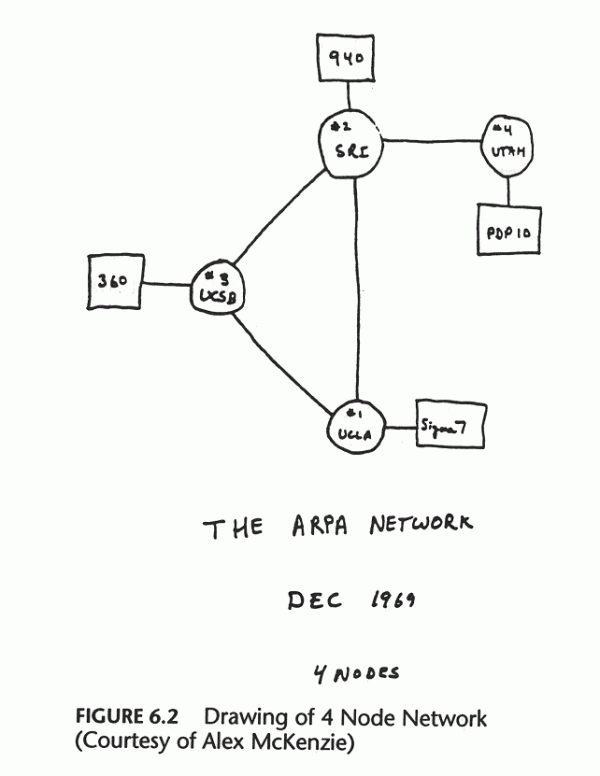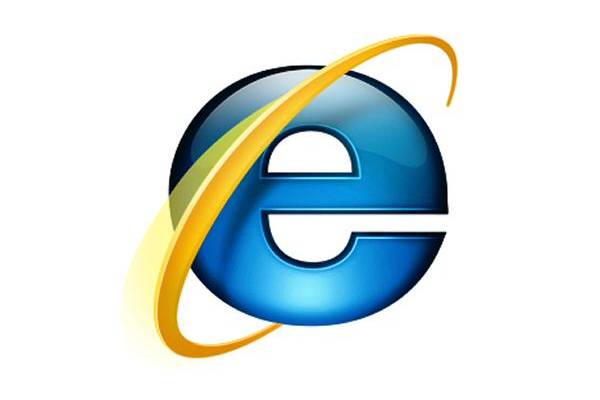
Short url to this post:
The concept of an internet free world now seems unimaginable and to a certain degree, frightening. You may be surprised to know that LOLCats and Rick Rolls weren’t on the minds of two California universities when they began tests 40 years ago, successfully sending data between two computers in 1969. These were the humble beginnings of ARPANET…what is now, the internet.
What better time to recap on the last 40 years and provide a brief history of how a technology that has changed our lives, came to be. Before you begin reading however, if you’d like a more visual representation, you may want to sit back and watch this wonderful video that will take you through the decades to today.
Not in the mood to read, sit back and enjoy this:
[youtube]http://www.youtube.com/watch?v=9hIQjrMHTv4[/youtube]
A History
 The Internet was designed in part to provide a communications network that would work even if some of the sites were destroyed by nuclear attack. If the most direct route was not available, routers would direct traffic around the network via alternate routes.
The Internet was designed in part to provide a communications network that would work even if some of the sites were destroyed by nuclear attack. If the most direct route was not available, routers would direct traffic around the network via alternate routes.
Arpanet was created by the US Department of Defense Advanced Research Projects Agency Darpa. The first connection in 1969 was between The University of California Los Angeles and The Stanford Research Institute. By the end of the year connections had also been added to The University of California Santa Barbara and the University of Utah.
E-mail was adapted for ARPANET by Ray Tomlinson of BBN in 1972. He picked the @ symbol from the available symbols on his teletype to link the username and address.
The ftp protocol, enabling file transfers between Internet sites, was published as an RFC in 1973, and from then on RFC’s were available electronically to anyone who had use of the ftp protocol.
The telnet protocol, enabling logging on to a remote computer, was published as a Request for Comments (RFC) in 1972. RFC’s are a means of sharing developmental work throughout community.
In 1973, the first international network connection links the US with University College London University College London.
The Internet matured in the 70’s as a result of the TCP/IP architecture first proposed by Bob Kahn at BBN and further developed by Kahn and Vint Cerf at Stanford and others throughout the 70’s. It was adopted by the Defense Department in 1980 replacing the earlier Network Control Protocol (NCP) and universally adopted by 1983.
 As the commands for e-mail, FTP, and telnet were standardized, it became a lot easier for non-technical people to learn to use the nets. It was not easy by today’s standards by any means, but it did open up use of the Internet to many more people in universities in particular. Other departments besides the libraries, computer, physics, and engineering departments found ways to make good use of the nets–to communicate with colleagues around the world and to share files and resources.
As the commands for e-mail, FTP, and telnet were standardized, it became a lot easier for non-technical people to learn to use the nets. It was not easy by today’s standards by any means, but it did open up use of the Internet to many more people in universities in particular. Other departments besides the libraries, computer, physics, and engineering departments found ways to make good use of the nets–to communicate with colleagues around the world and to share files and resources.
While the number of sites on the Internet was small, it was fairly easy to keep track of the resources of interest that were available. But as more and more universities and organizations–and their libraries– connected, the Internet became harder and harder to track. There was more and more need for tools to index the resources that were available.
 In 1989 another significant event took place in making the nets easier to use. Tim Berners-Lee and others at the European Laboratory for Particle Physics, more popularly known as CERN, proposed a new protocol for information distribution. This protocol, which became the World Wide Web in 1991, was based on hypertext–a system of embedding links in text to link to other text, which you have been using every time you selected a text link while reading these pages.
In 1989 another significant event took place in making the nets easier to use. Tim Berners-Lee and others at the European Laboratory for Particle Physics, more popularly known as CERN, proposed a new protocol for information distribution. This protocol, which became the World Wide Web in 1991, was based on hypertext–a system of embedding links in text to link to other text, which you have been using every time you selected a text link while reading these pages.
The development in 1993 of the graphical browser Mosaic by Marc Andreessen and his team at the National Center For Supercomputing Applications (NCSA) gave the protocol its big boost. Later, Andreessen moved to become the brains behind Netscape Corp., which produced the most successful graphical type of browser and server until Microsoft declared war and developed its MicroSoft Internet Explorer.
Since the Internet was initially funded by the government, it was originally limited to research, education, and government uses.
Delphi was the first national commercial online service to offer Internet access to its subscribers. It opened up an email connection in July 1992 and full Internet service in November 1992. All pretenses of limitations on commercial use disappeared in May 1995 when the National Science Foundation ended its sponsorship of the Internet backbone, and all traffic relied on commercial networks. AOL, Prodigy, and CompuServe came online. Since commercial usage was so widespread by this time and educational institutions had been paying their own way for some time, the loss of NSF funding had no appreciable effect on costs.
 Microsoft’s full scale entry into the browser, server, and Internet Service Provider market completed the major shift over to a commercially based Internet. The release of Windows 98 in June 1998 with the Microsoft browser well integrated into the desktop.
Microsoft’s full scale entry into the browser, server, and Internet Service Provider market completed the major shift over to a commercially based Internet. The release of Windows 98 in June 1998 with the Microsoft browser well integrated into the desktop.
In 1998, Sun co-founder Andy Bechtolsheim writes a check for $100,000 to an entity that doesn’t exist yet: a company called Google Inc. By June 2000, Google becomes the world’s largest search engine.
During this period of enormous growth, businesses entering the Internet arena scrambled to find economic models that work. Free services supported by advertising shifted some of the direct costs away from the consumer–temporarily.
The stock market has had a rocky ride, swooping up and down as the new technology companies, the dot.com’s encountered good news and bad. The decline in advertising income spelled doom for many dot.coms, and a major shakeout and search for better business models took place by the survivors.
As the Internet has become ubiquitous, faster, and increasingly accessible to non-technical communities, social networking and collaborative services have grown rapidly, enabling people to communicate and share interests in many more ways.
This brings us to today where sites like Facebook, Twitter, Linked-In, YouTube, Flickr, Second Life, delicious, blogs, wikis, and many more let people of all ages rapidly share their interests of the moment with others everywhere.
Summarised via Walthowe
Get the TNW newsletter
Get the most important tech news in your inbox each week.




